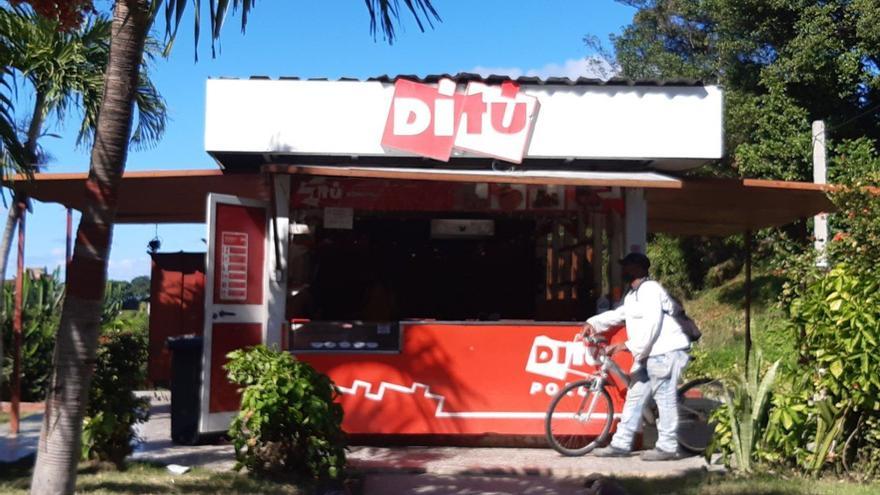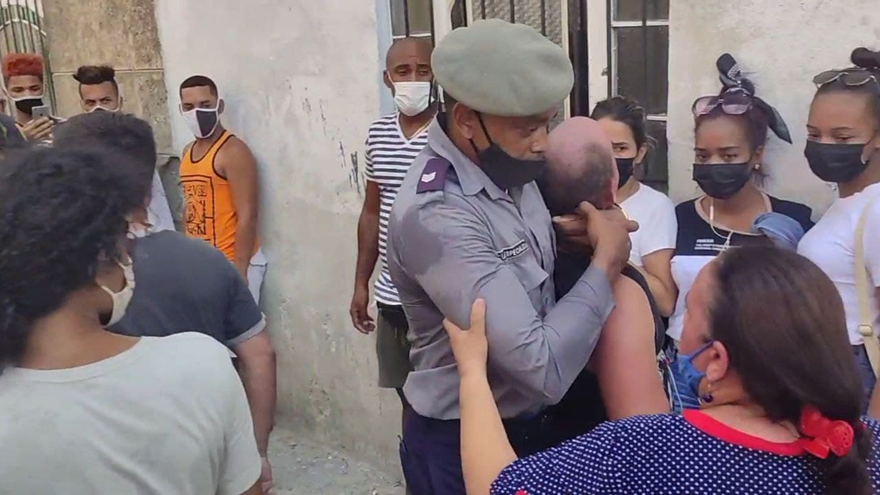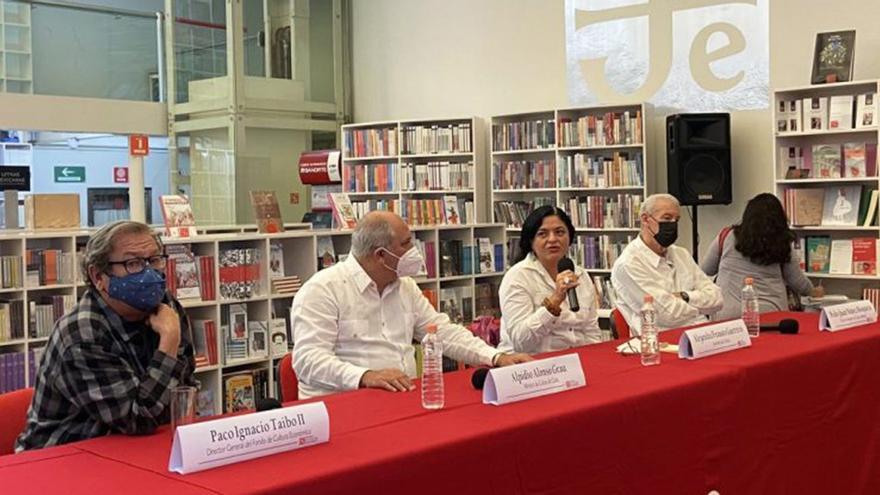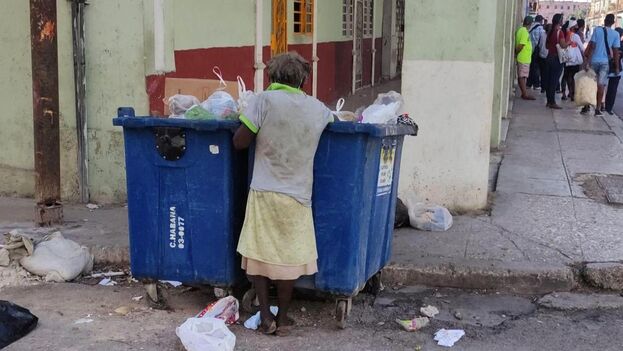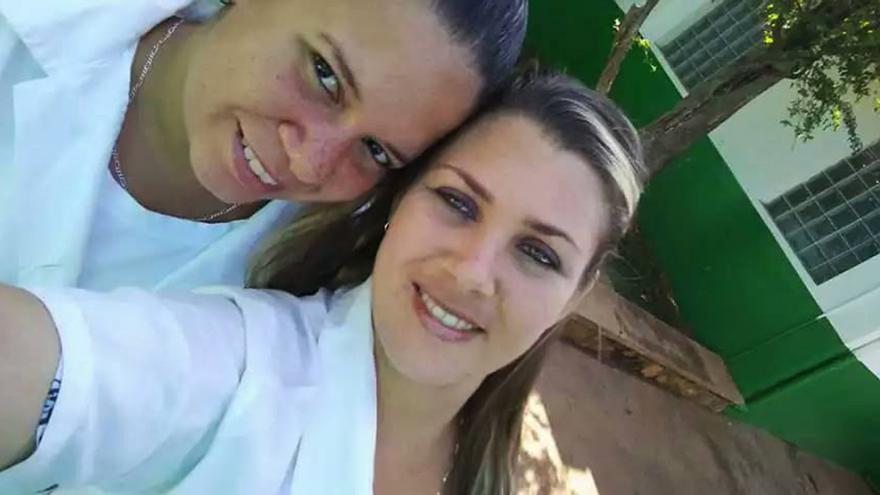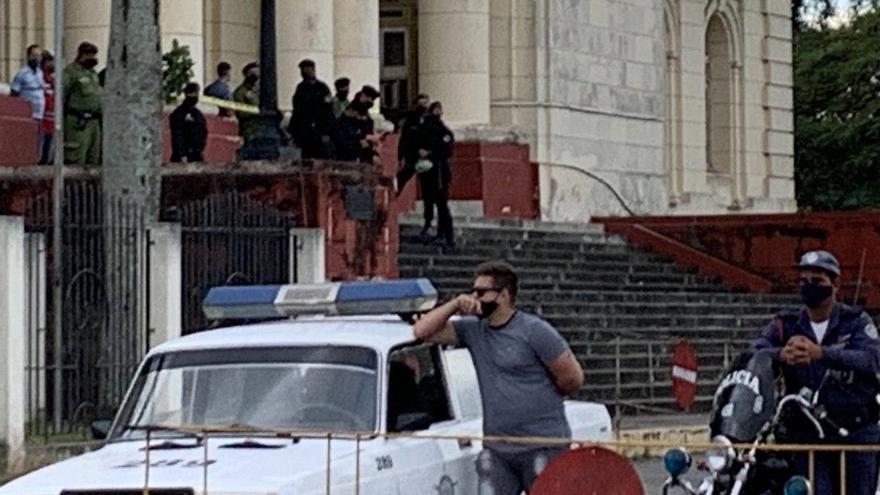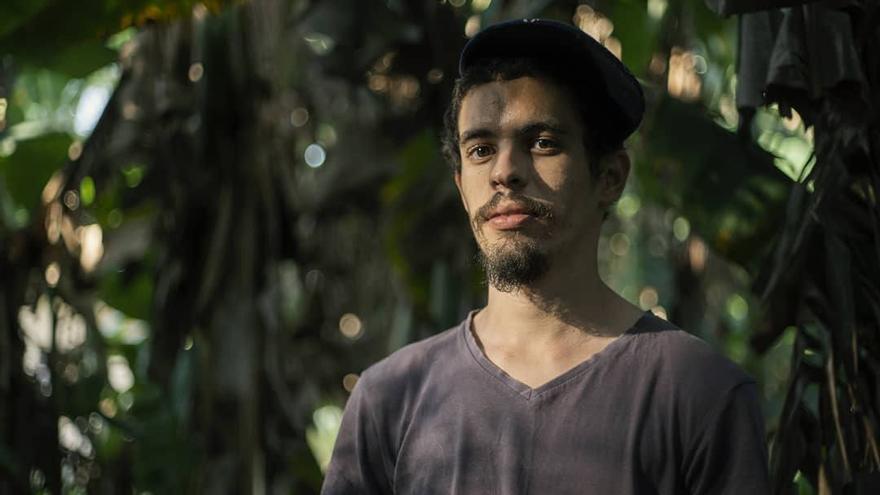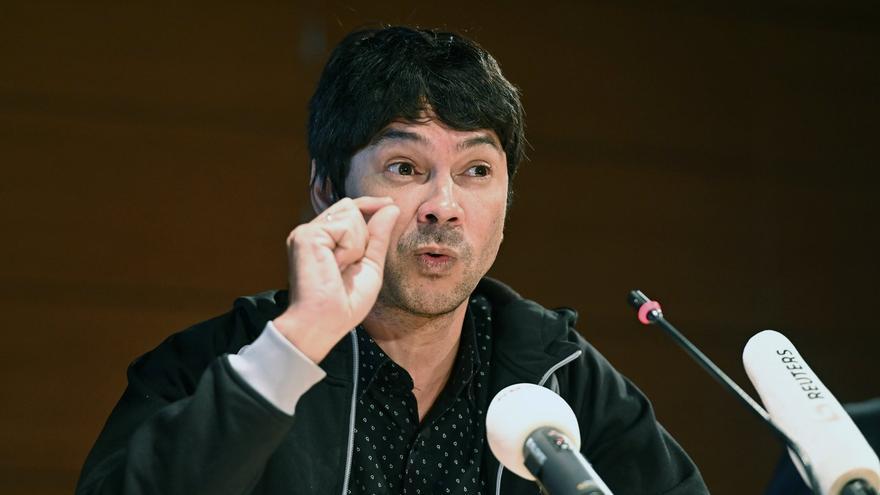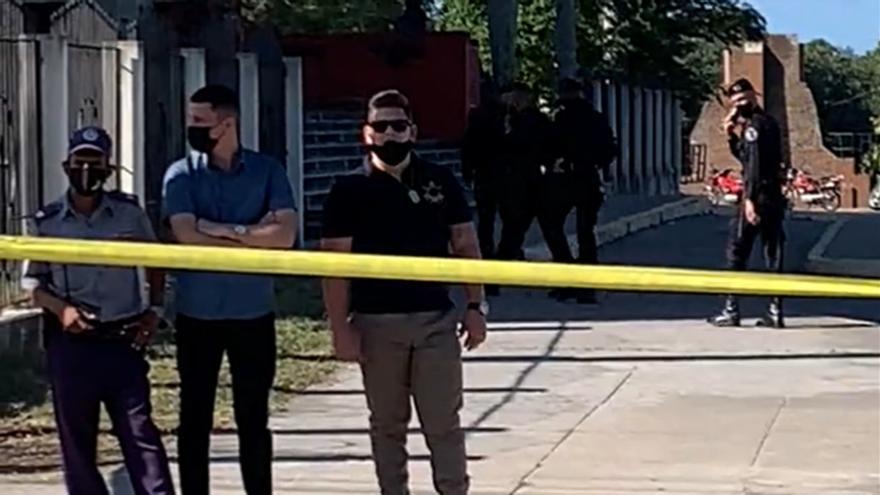
![]() 14ymedio, Havana, 28 January 2022 — The Municipal Court of the Isle of Youth has acquitted three July11th (11J) protesters for whom the Prosecutor’s Office requested three years in prison for a crime of public disorder. They are Ramón Salazar Infante, president of the Pinero Autonomous Party (PAP), Martha de los Ángeles Pérez Acosta, head of the same party’s human rights department, and Francisco Alfaro Diéguez, leader of the March 13 Movement (M13).
14ymedio, Havana, 28 January 2022 — The Municipal Court of the Isle of Youth has acquitted three July11th (11J) protesters for whom the Prosecutor’s Office requested three years in prison for a crime of public disorder. They are Ramón Salazar Infante, president of the Pinero Autonomous Party (PAP), Martha de los Ángeles Pérez Acosta, head of the same party’s human rights department, and Francisco Alfaro Diéguez, leader of the March 13 Movement (M13).
According to the sentencing document, provided to 14ymedio, the events that involved them “do not typify the crime of public disorder provided for and sanctioned” in the Penal Code.
The trial was held on December 29 and, according to what Salazar Infante told the newspaper Cubanet, the ruling has been a relief and has taken them by surprise, in view of the excessive and exemplary sentences that the courts are imposing throughout the country.
A fourth protester charged in the municipality, Juan Luis Sánchez González, was sentenced to three years in prison for the crime of “attack,” compared to the five requested by the Public Ministry. The activist was in preventive detention in El Guayabo. continue reading
The sentence was issued on January 10, although it was not made public until the 22nd, so it was not clear whether those affected, in particular Sánchez González, can appeal it, since both he and the Prosecutor’s Office have 10 days to do so.
The account of the events states that Sánchez González was passing through the place of the demonstration at the time that Loisel Castro Herrera (arrested and released a month later with a fine) was running pursued by two officers, José Rafael García Salazar and Reulis Piñón Pileta, and there, “the accused Juan Luis placed himself between the agents and the aforementioned citizen and without saying a word, he hit officer Reulis on the chin, causing a bruise, an injury that did not require medical treatment.”
The sentence details that Sánchez González denied having dealt the blow to the agent, but that this was confirmed by the testimony of the agent and by at least two witnesses. Both the relatives who have attended the trials and various civil organizations have warned that the witnesses provided by the Prosecutor’s Office lie, exaggerate or distort the facts.
In addition, neither the prosecutor’s petition nor the Court’s ruling refers to the beating that Juan Luis Sánchez González received by the agents after they arrested him.
As for the three acquitted, the document emphasizes that they acknowledged their participation in the demonstration, but that “there were no crowds of any people in the park where the defendants went,” and that “no disturbance was generated in the few minutes of these acts” and that the three defendants “stopped their behavior as soon as officer Iraimis Durán took them out of the group of people and peacefully walked to where they were told they were being arrested at that moment.”
Salomé García Bacallao, a member of the group Justicia 11J, which supports the families of the detainees with legal advice and shares the information available on the trials, sees in this court’s decision “a pattern”: that “the sentences are being delayed.” On the other hand, says the activist, “we also do not know if in those 15 days (between the oral trial and the publication of the sentence) they modified the sentence due to the international pressure that is being exerted.”
García Bacallao recalls that the trial against 36 young people present at the protest at the corner of Toyo, the place that became the most iconic image of that Sunday, when the protesters overturned a police patrol car, begins on Monday in the Provincial Court of Havana. The activist has the impression that this process, unlike what has happened so far, will be covered by the official media.
Among the defendants are six minors under 18 years of age, for whom the Prosecutor’s Office requests sentences of between 13 and 23 years in prison:
– Rowland Jesús Castillo Castro (17 years old), 23 years in prison
– Kendry Miranda Cárdenas (17), 20 years
– Brandon David Becerra Curbelo (17), 18 years
– Nayn Luis Marcos Molinet (16), 17 years
– Lázaro Noel Urgelles Fajardo (16), 13 years
– Giuseppe Belaunzaran Guada (17), 13 years
On February 7, in the same trial, the following defendants will also be prosecuted:
– Juan Emilio Pérez Estrada (27), 25 years in prison
– Asley Nelson Cabrera Puente (39), 25 years
– Donger Soroa González (30), 25 years
– Yoanky Báez Albornoz (27), 25 years
– Alexander Ayllón Carvajal (23), 23 years
– Ronald García Sánchez (28), 23 years
– Jorge Vallejo Venegas (35), 22 years
– Alexis Borges Wilson (57), 22 years
– Henry Fernández Pantera (40), 22 years
– Francisco Eduardo Soler Castañeda (49), 22 years
– Lauren Martínez Ibáñez (18), 21 years
– Duannis Dabel León Taboada (22), 21 years
– Adael Jesús Leyva Díaz (24), 21 years
– Dayan Gustavo Flores Brito (22), 20 years
– Óscar Bárbaro Bravo Cruzata (23), 20 years
– Yussuan Villalba Sierra (31), 20 years
– Daisy Rodríguez Alfonso (38), 20 years
– Ricardo Duque Solis (55), 19 years
– Edel Cabrera González (28), 19 years
– Luis Armando Cruz Aguilera (21), 18 years
– Kevin Damián Frómeta Castro (19), 18 years
– Yunior García Vizcay (27), 18 years
– Adrián Oljales Mora (23), 17 years
– Yunaiky De La Caridad Linares Rodríguez (24), 17 years
– Oriol Hernández Gálvez ( 48), 17 years
– Rafael Jesús Nuñez Echenique (21), 16 years
– Brayan Piloto Pupo (18), 16 years
This Thursday the trials in San José de las Lajas and Quivicán (Mayabeque) and Havana concluded. However, the sentences have not yet been announced.
The fourth process carried out this week, in Jovellanos, Matanzas, where the opponent Félix Navarro and his daughter, the Lady in White Sayli Navarro Álvarez, were tried, among others, ended on Tuesday.
In an audio released by former political prisoner Ángel Moya, Sayli Navarro explained that his trial went the same as others held to date (with only one companion allowed per defendant and the room “full of soldiers”), and denounced that both his father and other prisoners were handcuffed, with the cuffs known as shakiras, the entire time.
“These handcuffs have chains that are attached to the waist, and they also have other chains that go directly to other cuffs that they put on their ankles, and that’s how they walk,” said the opponent’s daughter, who was concerned because the friction of the cuff on the ankle of her diabetic father, can cause an injury and worsen his ailments.
“There was a boy who said that here at the police station they had beaten him” and even pointed out which officers were there, but the young man, she says, was denied, several times, the medical care he needed after the beating he received.
____________
COLLABORATE WITH OUR WORK: The 14ymedio team is committed to practicing serious journalism that reflects Cuba’s reality in all its depth. Thank you for joining us on this long journey. We invite you to continue supporting us by becoming a member of 14ymedio now. Together we can continue transforming journalism in Cuba.




